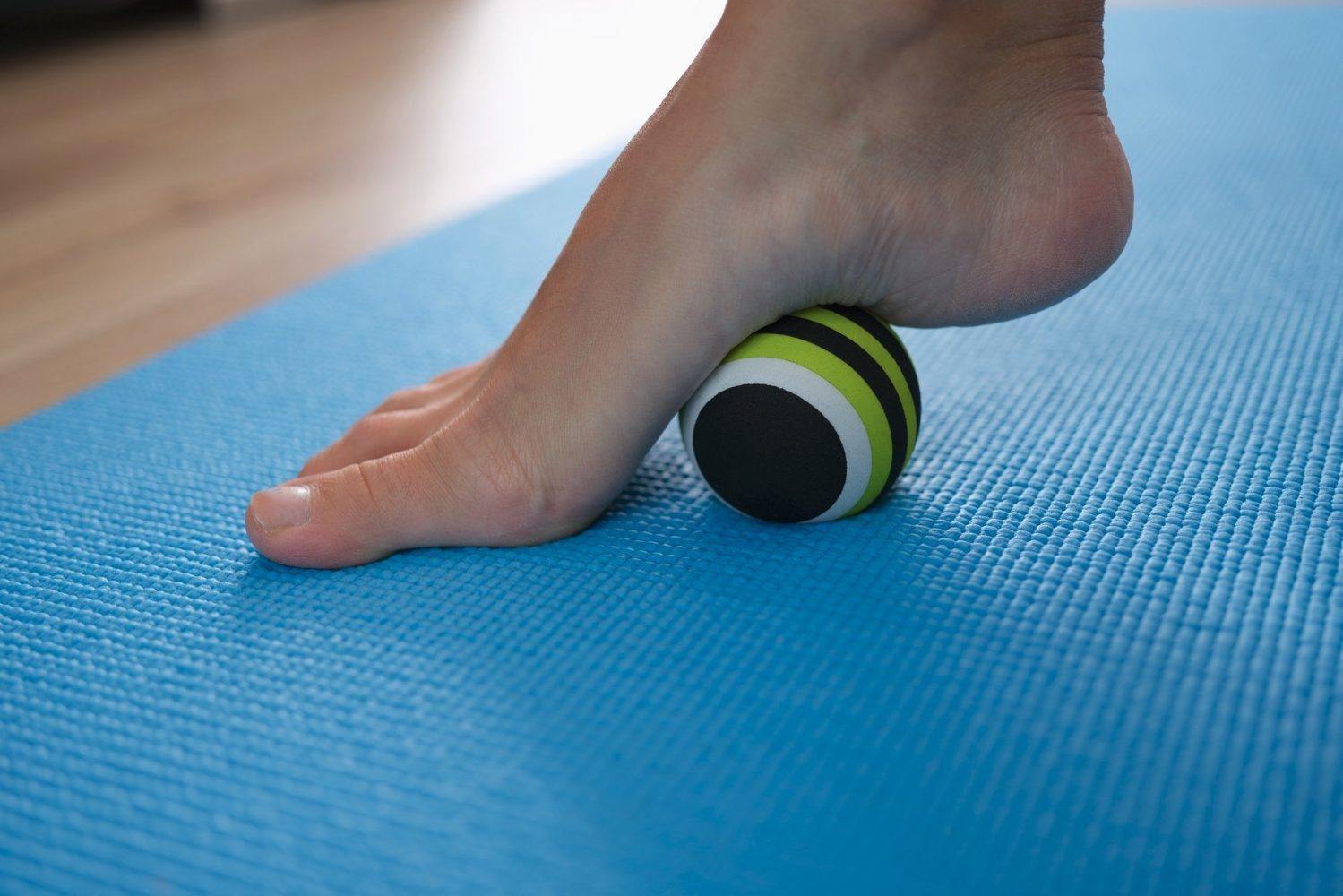

Plantar fasciitis is a condition that affects the thick band of tissue, known as the plantar fascia. When this tissue - which runs at the bottom of your foot, between your toes and heels - slowly deteriorates, it's known as plantar fasciitis.
Plantar fasciitis occurs as a result of too much pressure put on the bottom of your feet. When excessive pressure is put on this area, ligaments can be damaged or torn, and the plantar fascia can become inflamed as a result. While this condition is common in athletes who participate in high-impact sport, like soccer, gymnastic or dancing, it can also develop through other means.
As people age, decades of pressure on the plantar fascia can cause it to become damaged, resulting in the condition. So, it can occur suddenly as a result of an injury, or it can occur gradually over time for prolonged wear and tear.
There are many different treatments for plantar fasciitis, and in most cases, the ailment can be treated and fixed. However, in very serious cases, surgery may be required.
A popular modern treatment for plantar fasciitis is shockwave therapy. Shockwave therapy works by sending energy waves to the injured tissue which encourages the body to promote healing in that particular area, through activities like improved blood circulation and the formation of new blood vessels.
The first sign of Plantar fascitis is usually pain in the heel area. In the past, doctors thought that heel spurs bought on this pain. However, studies have now shown that heel spurs occur as a result of plantar fasciitis.
Fortunately, specific exercises and stretches can help relieve pain associated with plantar fasciitis. Some of these movements can even help prevent the development of plantar fasciitis. Here, we outline how to help to avoid developing the condition, and stretches and exercises you can do to relieve pain and decrease your likelihood of developing it.
People with plantar fasciitis may experience some, or all, of the following symptoms:



Whether aerobic exercise is recommended, will depend on your specific case of plantar fasciitis. In some cases, rest may be the only answer - and physical activity will be detrimental to the healing of the condition. This is why it's important to check with a medical professional about whether aerobic exercise is recommended.
If a medical professional does recommend aerobic exercise, they will likely suggest something that's low impact, like walking or water aerobics. They will be able to make suggestions about what type of exercise will work best for your specific case.
Gentle stretching can help prevent plantar fasciitis from developing. Stretching can help the ligament become more flexible, which in turn, can reduce the stress on the ligament and decrease the risk of injuring it. To target the appropriate foot and lower limb areas specifically, you can do the stretches listed above.
While custom orthotics can certainly help - and treat - plantar fasciitis, they can actually also prevent the condition from developing. Custom orthotics distribute weight and pressure properly around your feet, so stress isn't put onto places that can't handle it, and are prone to getting injured as a result of improper alignment. If you notice any heel pain, it's a good idea to get it checked out straight away. A podiatrist may determine that you're at risk of developing the condition and may recommend customer orthotics to help you avoid it.
A common cause of plantar fasciitis is when excessive pressure is placed on the heel - especially over long periods of time. For this reason, the condition is common in long-distance runners. The chance of a long-distance runner developing plantar fasciitis is increased if they don't wear well-fitting and supporting shoes. Appropriate shoes will ensure that the heel doesn't get exposed to too much stress, and will soak up some pressure that could damage your plantar fascia.
Your feet bear the weight of your entire body, so excessive weight means extra stress on your heels. This stress can be a primary cause of plantar fasciitis.
To help avoid developing the condition - and to improve your overall health-you should try and keep your weight within a healthy range.
Stretching or light exercise before physical activity can help prevent plantar fasciitis. Warming up before participating in sports or exercise has a number of benefits. Firstly, it will increase blood flow to your muscles, which helps to prevent injuries.
Secondly, warming up increases the temperature of your blood, allowing oxygen to be delivered to your muscles at a higher rate, improving endurance.
Muscles that don't have adequate blood flow to them aren't able to stretch as easily, making them more prone to injury, and aren't able to provide support to ligaments at their full potential.
Ignoring plantar fasciitis can make it worse - plus, the pain of the condition itself is usually severe and will need to be treated so that it doesn't affect your quality of life. Plantar fasciitis is often made up of many tiny tears, known as microtraumas, so if these are ignored, they can escalate and get much worse.
A podiatrist is a doctor of feet, and they are highly skilled and well trained to diagnose and treat plantar fasciitis. They can undertake a physical exam to diagnose the condition. If they determine that you do have plantar fasciitis, they can work with you to put together a treatment plan, as well as recommend stretches and exercises that can help reduce heel pain.
Book your appointment with our podiatry team online here or call us on (07) 3356 3579.
| Monday | 7:40am - 6:00pm |
| Tuesday | 7:40am - 6:00pm |
| Wednesday | 7:40am - 6:00pm |
| Thursday |
7:40am - 6:00pm |
| Friday | 7:40am - 2:00pm |
| Saturday | CLOSED |
| Sunday | CLOSED |
Ground Floor, 344 Queen Street,
Brisbane City QLD 4000
| Monday | 7:40am - 6:00pm |
| Tuesday | 7:40am - 6:00pm |
| Wednesday | 7:40am - 6:00pm |
| Thursday |
7:40am - 6:30pm |
| Friday | 7:40am - 5:00pm |
| Saturday | 7:40am - 4:30pm |
| Sunday | CLOSED |
Newmarket Village, 114/400 Newmarket Rd, Newmarket QLD 4051